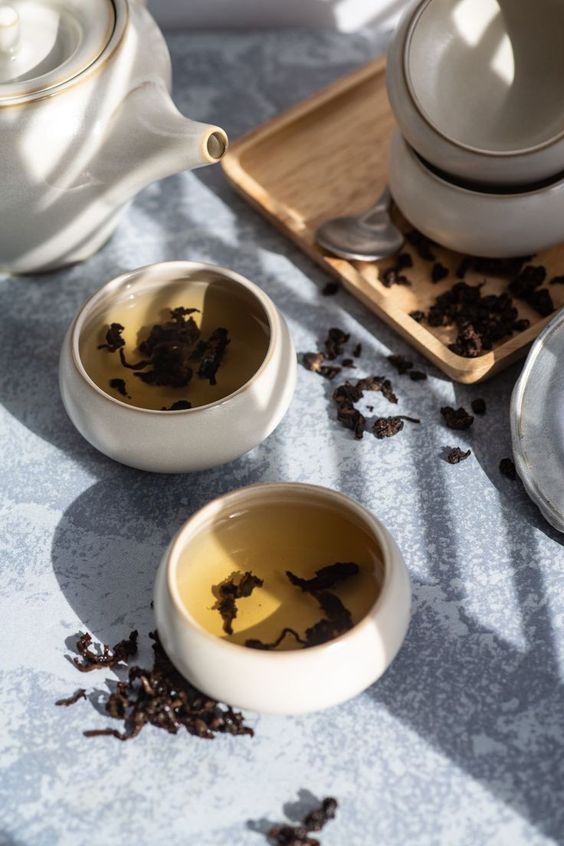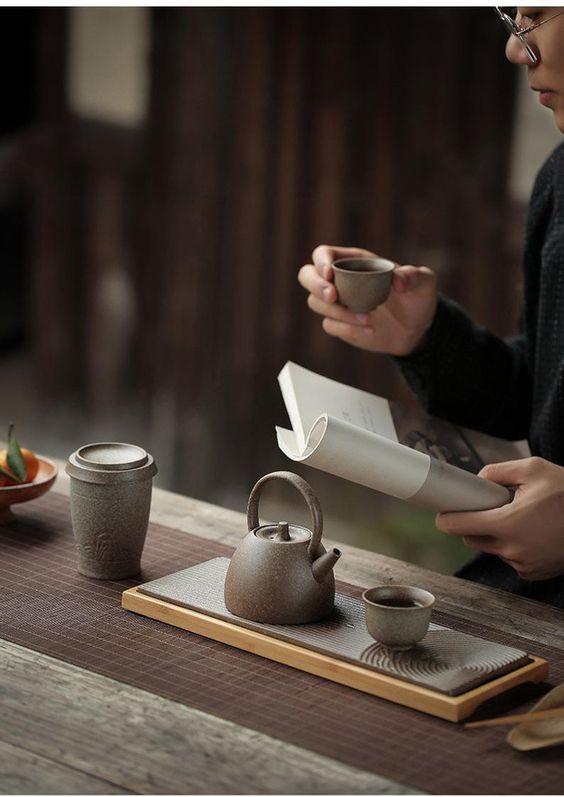Dark Tea Process
Dark tea is also known as post-fermented tea. The reason why it is called ‘post-’ fermentation is that, compared with the oxidative fermentation of oolong tea and Dark tea, it is a curing process with the participation of microorganisms. The traditional Dark tea production process includes killing, kneading, piling and drying. Depending on the type of Dark tea, there may be a second piling and ageing steps.
Ovation
The ‘Wadding’ is a unique production step of Dark tea. By piling up the tea leaves and adding water, the microorganisms around the environment are encouraged to grow and multiply rapidly on the tea leaves under certain temperature conditions.
Dark Tea Stacking

Microorganisms include various types of yeasts, Aspergillus and bacteria that form a tea-making team. They consume sugar, fat, protein, amino acids, etc. in the tea leaves in the process of growth, and secrete beneficial components that help to change the composition of tea and some small molecules with special flavour and health benefits, such as oxidation of tea polyphenols into theaflavin, the aru begin, and theaflavin, and hydrolysis of fibre into soluble polysaccharides and so on. The duration of osmosis can be as short as a few hours and may last up to several months.
This biochemical power and humidity and heat conditions promote the formation of the unique qualities of Dark tea, such as not bitter and not astringent, mellow taste, orange and not green soup colour, and yellow-brown and not green leaf bottom. The curing process plays a decisive role in the formation of the colour, aroma and taste of the special qualities of Dark tea.
Technology Comparison
In the whole process of Dark tea production, the first part of the process is very similar to the green tea production process, to kill the green. When killing, the temperature of the leaf surface of the fresh leaves must be increased rapidly to ensure that the polyphenol oxidase is blunted in a short period.
The latter part is again very much like the process of making Dark tea, which requires an oxidising process. However, unlike Dark tea, Dark tea oxidation is the tea itself contains polyphenol oxidase enzyme involved in enzymatic oxidation, while Dark tea in the heap of moist heat process and its subsequent fermentation process of polyphenol oxidase enzyme from the air microbial secretion of extracellular enzymes, is not the tea itself contains polyphenol oxidase enzyme, the tea itself contains polyphenol oxidase in the greening link has been passivated.
The characteristics of Dark tea are: ‘leaf colour is Dark or brownish green, soup colour is orange or brownish-red’. Therefore, we can screen from the appearance, aroma, colour and taste in 4 aspects.
1. Shape
If the Dark tea is tightly pressed tea, then the top-grade tea will often have these characteristics: brick surface integrity, clear mould lines, sharp edges and corners, no cracks on the side, no old stalks, and not too many fine tea leaves mixed with the end.If you want to screen the loose tea, then the stripes are even, oily and moist is a good tea; Take high-quality Fu brick tea and Qianliang tea as an example, ‘golden flower’ bright, large and lush particles, are an important features of the best tea.
2. Aroma
The top quality Dark tea has the aroma of mushrooms and flowers, and it smells like sweet wine or pine smoke; the old tea has the aroma of ageing. Take Poria tea and Qianliang tea for example, both of them have a special fungus flower aroma; while the wild Dark tea has a light fragrance, which is refreshing when you smell it.
3. Colour
There are two types of colours mentioned here. The colour of Premium Dark Tea is mostly brownish green or oily Dark, and the surface of the tea leaves looks extremely glossy. After brewing, the soup colour of premium Dark tea is bright orange. The colour of aged tea is red like amber, and the colour of new wild tea can be as red as wine.

4. Taste
The taste of quality Dark tea is sweet or slightly astringent, while the aged tea is extremely lubricated, and people still have a sweet flavour on their lips and teeth after tasting it.
Brewing Dark Tea
① Selection of tea utensils: water boiler or gaiwan/zisha teapot
②Water temperature control: Because the tea leaves of Dark tea are older, it is necessary to use boiling water at 100℃ to ensure the quality of tea soup;
③Tea-to-water ratio: The tea-to-water ratio of high-grade brick tea and three-pointed tea is about 1:30, and the coarse old brick tea is about 1:20.
④Brewing method: tea boiler/gaiwan/zisha teapot
Cooking method (including Tibetan milk tea practice) Take a pot of boiling water, pour about 500 ml of water, and wait for the fire to boil, you can put 10~15 grams of Dark tea, into the pot of water boiling, change the fire to cook for 2 minutes, you can turn off the fire, filter off the dregs of the tea, and take the clear tea soup to drink. In the ethnic minority areas, sometimes also add some salt or milk mixed with tea, made of characteristic milk tea.
Dark Tea Storage
It is recommended to store it in a dry, ventilated and cool place, and not to store it together with items with strange smells, in order to avoid mouldy tea, change of flavour, and accelerate the process of moisture and heat oxidation of the tea body. Dark tea should not be sealed in plastic bags but can be packaged in packaging materials with better permeability such as kraft paper. In the Dark tea storage time, the national standard stipulates: that Hunan Anhua Dark tea can be stored for a long time under clean, moisture-proof and odourless conditions. However, this long-term still has its period where generally believed that brick tea is stored for 10 to 15 years, a thousand two tea for 10 to 15 years, loose tea for 5 to 10 years, its economic, drinking value is higher, high-grade raw materials produced by the boutique tea stored for 1 to 2 years that have a better taste. ’

Six Fort Tea Storage
Summary
Degree of fermentation of Dark tea: 90 per cent
Dark Tea Process: Killing - Kneading - Wadding - Drying
Dark tea origin classification: Hunan Dark tea, Hubei old green tea, Sichuan Dark tea and Dian Gui Dark tea
Dark tea brewing: tea-water ratio 1:20-1:30, temperature 100 ℃, the number of times 10 brewing
Dark tea storage: can be stored for a long time under clean, moisture-proof and odourless conditions.
